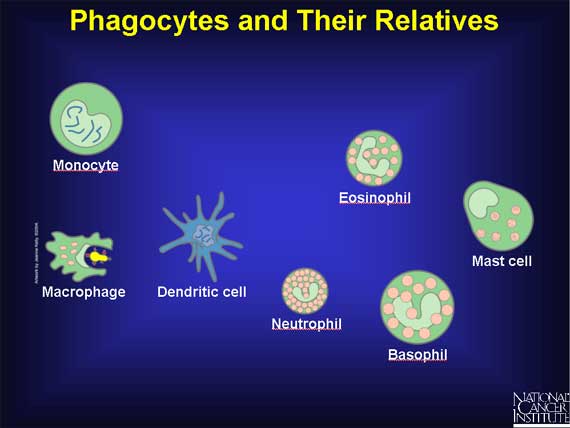|
Some immune cells have more than one name. For example, the name "phagocytes" is given to the large immune cells that can engulf and digest foreign invaders, and the name "granulocytes" refers to immune cells that carry granules laden with killer chemicals.
Phagocytes include monocytes, which circulate in the blood; macrophages, which are found in tissues throughout the body; dendritic cells, which are more stationary, monitoring their environment from one spot such as the skin; and neutrophils, cells that circulate in the blood but move into tissues when they are needed.
Macrophages are versatile cells; besides acting as phagocytic scavengers, they secrete a wide variety of signaling cytokines (called monokines) that are vital to the immune response.
Neutrophils are both phagocytes and granulocytes: they contain granules filled with potent chemicals. These chemicals, in addition to destroying microorganisms, play a key role in acute inflammatory reactions. Other types of granulocytes are eosinophils and basophils, which degranulate by spraying their chemicals onto harmful cells or microbes. The mast cell is a twin of the basophil, except it is not a blood cell. Rather, it is responsible for allergy symptoms in the lungs, skin, and linings of the nose and intestinal tract.
A related structure, the blood platelet, is a cell fragment. Platelets, too, contain granules. They promote blood clotting and wound repair, and activate some immune defenses.

< Previous | Index | Next Slide > |